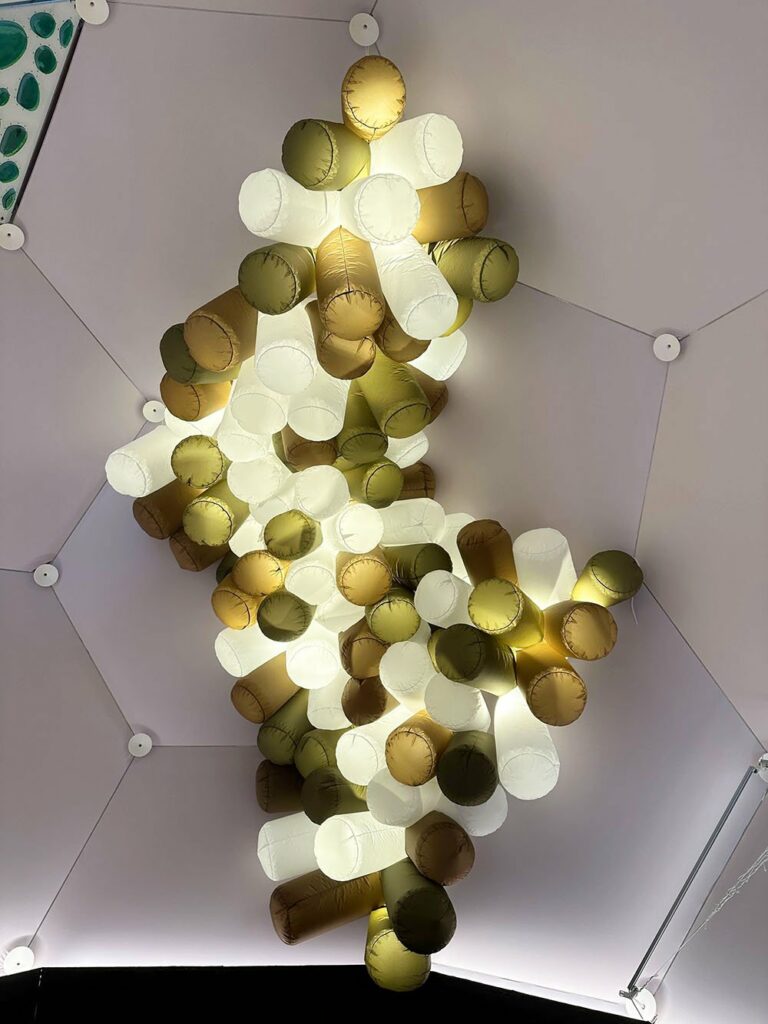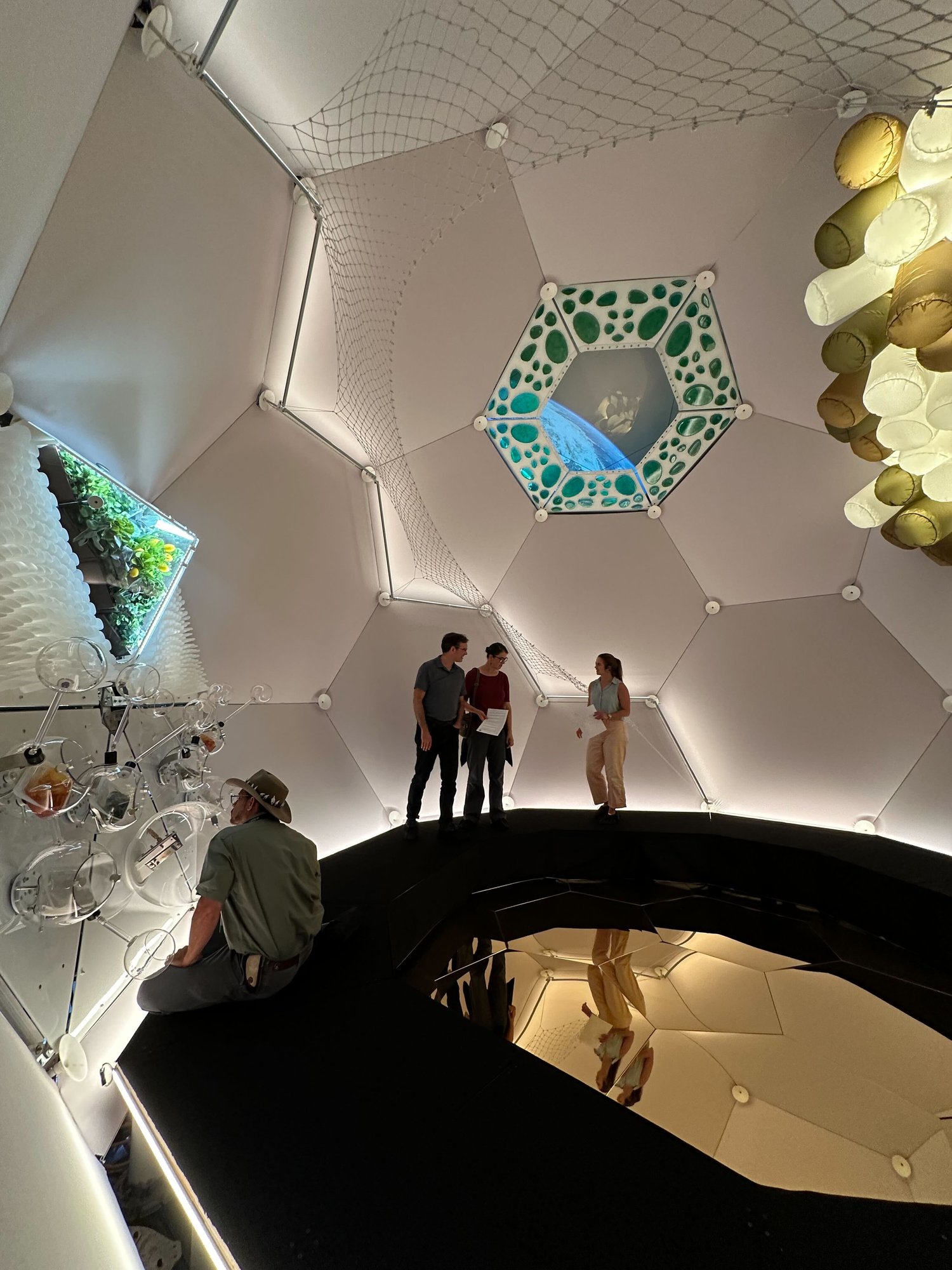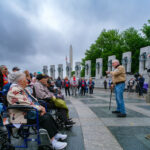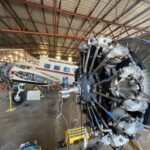On September 28, 2024, the Museum of Flight’s Home Beyond Earth exhibit expands its orbit and invites visitors to enter a futuristic life-size space station module—the TESSERAE Space Habitat Pavilion. The 20-feet high dome pavilion is a full-scale mock-up of the TESSERAE self-assembling space habitat designed to sustain and enrich life in orbit. Created in Cambridge, Mass. by Aurelia Institute, the TESSERAE module at the Museum will highlight food cultivation, cooking and the importance of shared meals in maintaining people’s well-being in space. This will be the first public exhibition of TESSERAE, which will be open in the Museum’s Great Gallery until Jan. 12, 2025.
“TESSERAE represents a new way of thinking about space habitat design,” said Ariel Ekblaw, CEO and Co-Founder of Aurelia Institute. “We’re moving beyond early space stations’ confined, utilitarian spaces. Our vision is to create expandable, reconfigurable habitats that can grow with the mission needs.” “We’re thrilled to have the TESSERAE Pavilion as part of our Home Beyond Earth exhibit and for our visitors to experience this groundbreaking concept at real scale,” said Geoff Nunn, Adjunct Curator for Space History and exhibit developer at The Museum of Flight.
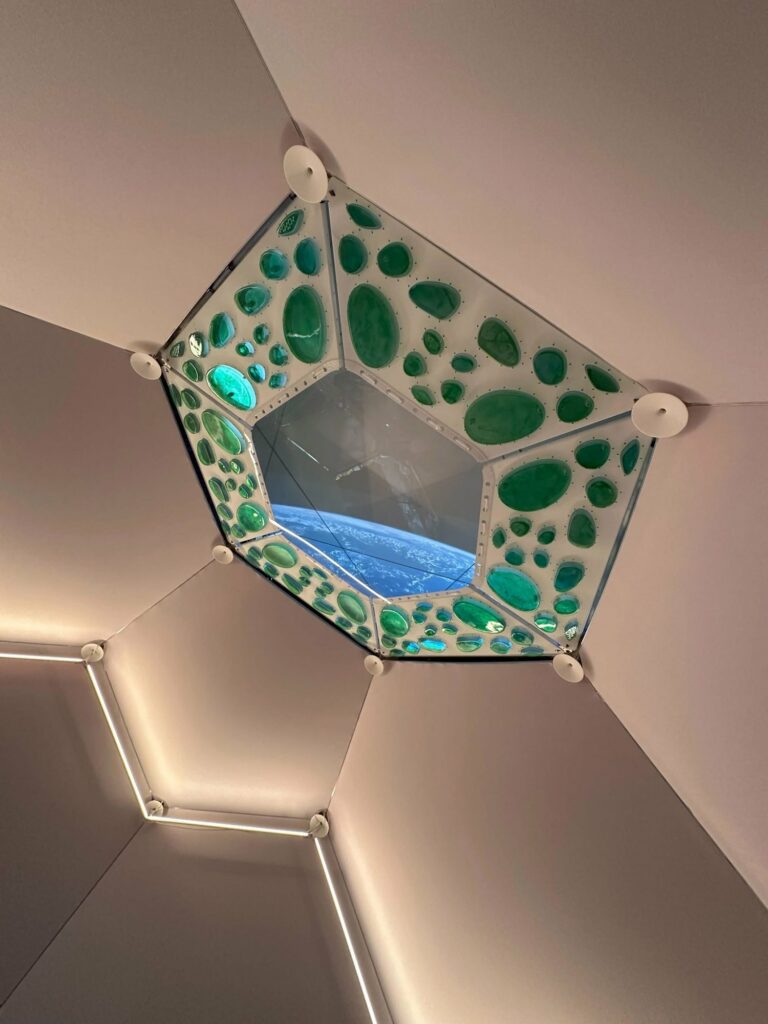
Visitors to the Pavilion will experience a full-scale, 20-foot by 24-foot mock-up of a TESSERAE module. TESSERAE (Tessellated Electromagnetic Space Structures for the Exploration of Reconfigurable, Adaptive Environments) is a self-assembling space habitat concept designed to expand living space in orbit. The structure consists of electromagnetically connected hexagonal and pentagonal tiles that can be flat-packed for launch and autonomously assembled in space. The TESSERAE platform is designed to be modular and customizable, allowing for interior living space optimized for comfort and community rather than basic survival.
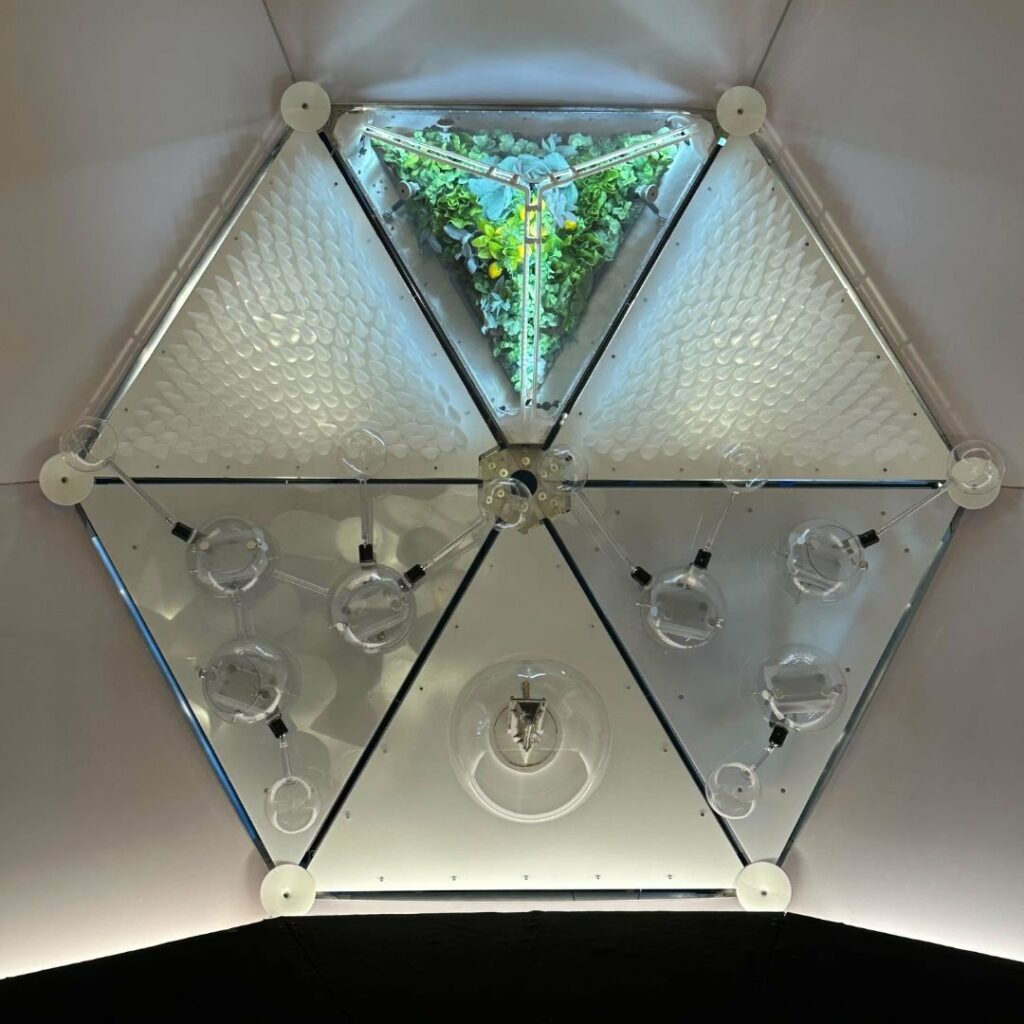
“Larger and more adaptable environments will support a broader range of scientific and commercial activities and provide the comforts of home, fostering long-term human presence in space,” said Aurelia Institute CEO Ariel Ekblaw. “These elements will be essential as the human population working and living in space becomes more diverse and expansive.” The concept of breaking bread in space is central to the exhibit, and Aurelia Institute has designed specific features highlighting the importance of food and communal dining in maintaining people’s well-being in space. One of these is the “Green Vault,” an aeroponics system for growing fresh produce in microgravity, a potential solution for future space inhabitants to cultivate their own food. Visitors can also observe a functional zero-gravity sous vide cooker and fermentation orbs showcasing approaches to nutritious and flavorful food prep in weightless environments.
Beyond the food-related features, TESSERAE showcases other crucial aspects of space living. Visitors will see storage solutions inspired by nature. Algae-filled panels that look like stained glass demonstrate a potential method for generating breathable air. And to address moving and even relaxing in zero gravity, sea anemone-inspired inflatables and hand-knotted nets provide both functional and aesthetically pleasing solutions for navigation within the habitat. To learn more about the exhibit, visit Aurelia Institute website and the Museum of Flight website.
